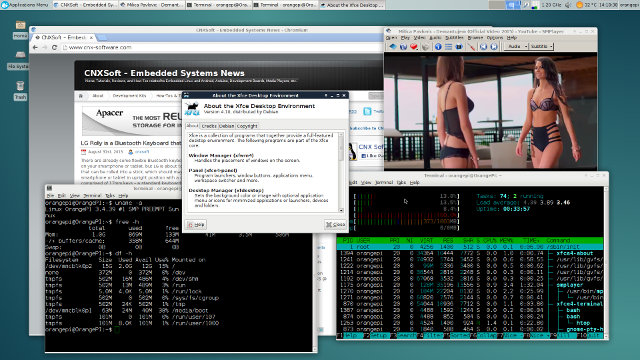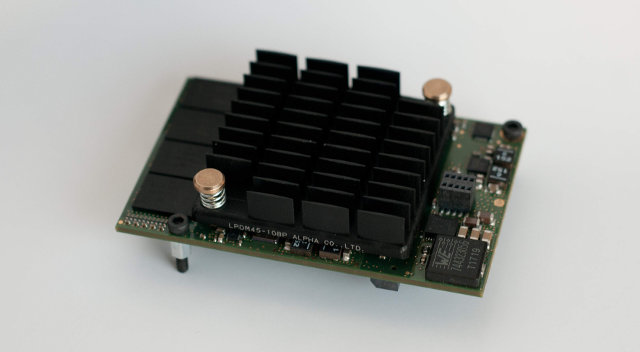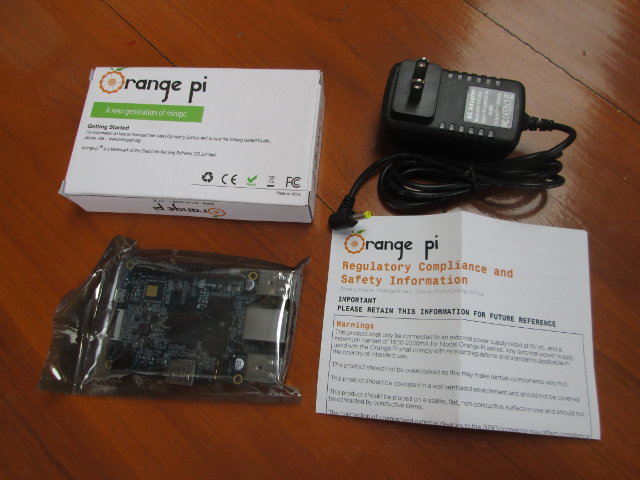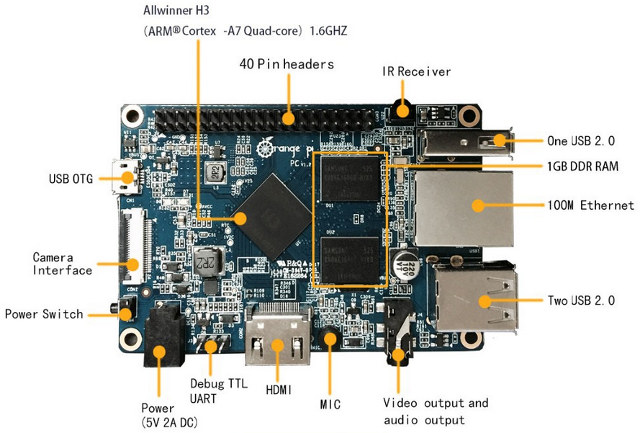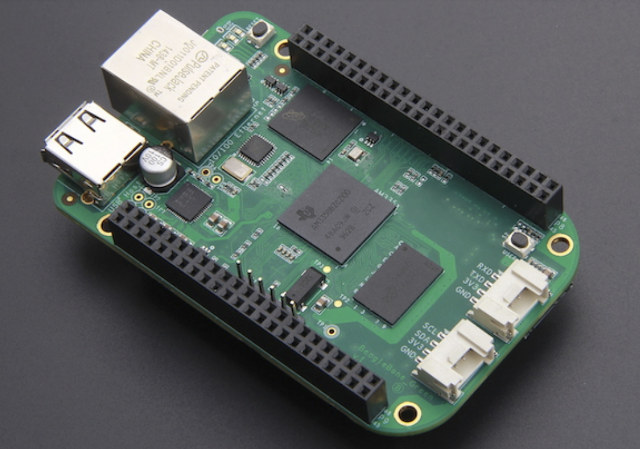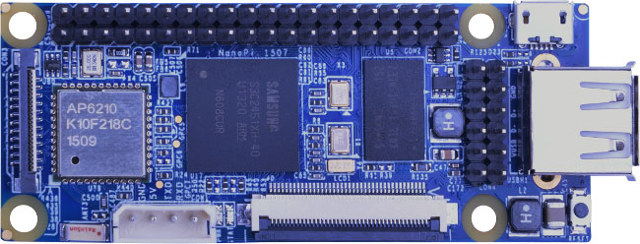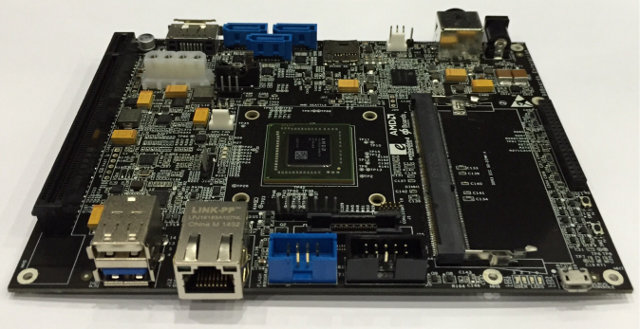Yesterday, I wrote a quick start guide for Orange Pi PC / 2 / Plus showing how to install Linux distributions on the board, and build your own image. With the launch of the $15 Orange Pi PC, Xunlong Software has taken over 1,500 orders for the board on their Aliexpress store, and probably sold a few hundreds or thousands in China via Taobao. So the board got relatively popular in a short time, considering it’s only selling via these two channels. I tested my tutorial with Orange Pi mini 2 ($23), a very similar board also based on Allwinner H3, but just a little larger and with an extra USB hosty port, but apart from that it’s similar to Orange Pi PC, and software compatible. I had already wrote about my test results in the previous article, where I did not recommend using the board in Linux as a […]
Scaleway C1 Dedicated ARM Server Price Drops to 3 Euros Per Month
Scaleaway launched their hosting services with dedicated ARM servers based on Marvell Armada 370/XP quad core ARM Cortex A9 processor this spring for 10 Euros per month, or 0.02 Euro per hour, and at the time, some people found it was not that attractive, as similarly priced plans provided by Linode or DigitalOcean with Intel server were also available, and it might have only been really compelling for people who specifically required an ARM server to play with. The company has now slashed its price, and it has become very attractive at 2.99 Euros (~$3.37 US) per month or 0.006 Euro per hour, excluding VAT. The server technical specifications and features are still the same: Server based on Marvell Armada 370/XP quad core ARMv7 processor Memory – 2 GB Memory Storage – 50 GB SSD Disk (extra space available for 1 Euro per 50GB) 1x Reserved public IPv4 200Mbit/s – Unmetered […]
Getting Started with Orange Pi PC, Pi 2 and Pi Plus Development Boards
I’ve recently received a kit based on Orange Pi mini 2 development board powered by Allwinner H3 quad core processor, but contrary to most other devices or boards I reviewed, this one what sent to me by one of my reader (thanks Jon!) as for various reasons he did not need to get it shipped to him. Today, I’ll start by showing off the kit I received, before writing a quick start guide showing how to install a Debian, and build your own Linux image. The instructions will work for all Orange Pi Allwinner H3 boards, including Orange Pi 2, Orange Pi Plus, and the recently launched Orange Pi PC, which has been rather popular thanks to its low $15 price tag. Orange Pi mini 2 Board Kit and CSI Camera This is what I got in the package… The board with a regulatory compliance and safety information sheet, as […]
Orange Pi PC Allwinner H3 Board Is Now Available for $15
Orange Pi 2 is a board powered by Allwinner H3 quad core processor that sells for $25. Shenzhen Xunlong Software has now launched a lower cost version with Orange Pi PC, still based on Allwinner H3 SoC, but getting ridiculously cheap at $15 + shipping ($3.43 in my case). Orange Pi PC specifications: SoC – Allwinner H3 quad core Cortex A7 @ 1.6 GHz (likely 1.2 GHz instead) with an ARM Mali-400MP2 GPU up to 600 MHz System Memory – 1GB DDR3 Storage – micro SD card slot (up to 64GB) Video Output – HDMI with CEC and HDCP support, AV port Audio I/O – HDMI, AV port, on-board microphone Connectivity – 10/100M Ethernet USB – 3x USB 2.0 host ports, 1x micro USB OTG port Camera – CSI Interface Expansions – 40-pin Raspberry Pi compatible header with 28 GPIOs, UART, I2C, SPI, PWM, CAN, I2S, SPDIF, LRADC, ADC, LINE-IN, […]
$39 Beaglebone Green Loses HDMI and DC Jack, Gains Grove Connectors
The original BeagleBone launched in 2011 $89, then Beagleboard.org released an updated version with HDMI, a faster processor, and more RAM called BeagleBone Black for $45 in 2013, possibly as a competitor to the Raspberry Pi, and since then the price has bumped up to $55 because of a larger eMMC flash. There’s now a new version – and a different color – with BeagleBone Green selling for $39 on SeeedStudio with shipping starting on August 20, 2015. BeagleBone Green board specifications: SoC – Texas Instruments Sitara AM3358BZCZ100 Cortex A8 @ 1 GHz with NEON + PowerVR SGX530 GPU System Memory – 512 MB DDR3L @ 800 MHz Storage – 4GB eMMC + micro SD slot USB Access to USB0, Client mode via Micro USB Access to USB1, Type A Socket, 500mA LS/FS/HS Serial Port – UART0 via 6-pin 3.3V TTL header (populated) Ethernet – 10/100M Ethernet , RJ45 Expansion […]
Linaro 15.07 Release with Linux 4.2 and Android 5.1
Linaro 15.07 has been released with Linux 4.2-rc3 (Baseline), Linux 3.10.83, 3.14.45 and 3.18.17 (LSK), and Android 5.1.1_r8. The Linux kernel got various bug fixes, and a power reduction technique has been implemented for Qualcomm processor. Progress has been made to boot Android with UEFI on Hikey board, and work is still on-going on 96boards including Hisilicon Hikey, Qualcomm DragonBoard 410c, and an upcoming and yet-to-be-formally-announced Marvell PXA1928 board called Helium. Highlights of this release: Linux Linaro 4.2-rc3-2015.07 linaro-android topic updated to 4.2-rc3 and recent AOSP/android-3.18 included GATOR version 5.21.1 llct-misc-fixes topic: “HACK: of: Limit FDT size for CRC check on arm64” has been dropped. FVP model was the last target to require this hack, but the new FVP firmware doesn’t need it anymore updated integration-linaro-vexpress64 topic by ARM LT: Versatile Express TC2 support is back, HDLCD display now works on TC2, the topic will be renamed to integration-linaro-vexpress next […]
NanoPi is a $16 WiFi and Bluetooth LE Linux Development Board
NanoPi is a new Linux development board powered by Samsung S3C2451 ARM9 processor with Wi-Fi and Bluetooth LE connectivity, connectors for a camera and an LCD display, as well as two expansion headers including a 40-pin “Raspberry Pi compatible” header. NanoPi specifications: Processor – Samsung S3C2451 ARM9 @ 400Mhz System Memory – 64M DDR2 Storage – micro SD slot Connectivity – AP6210 module for 802.11 b/g/n WiFi and Bluetooth 4.0 USB – 1x USB 1.1 host port, 1x micro USB OTG port for power and data (serial or Ethernet) Display I/F – LCD Interface: 0.5mm pitch SMT FPC seat, support full-color LCD (RGB: 8-8-8) Camera I/F – DVP Camera Interface: 0.5mm pitch FPC connector, including ITU-R BT 601/656 8-bit, I2C and GPIOs Debugging – Serial Port Expansion Headers “GPIO1” – 40-pin header including UART, SPI, I2C, GPIO pins (Raspberry Pi compatible) “GPIO2” – 12-pin header including I2S, I2C, UART pins Power – […]
96Boards Enterprise Edition Specification Published
When AMD announces its 96Boards Enterprise Edition complaint server board, I could read quite a few complains because the board used a non-standard form-factor such as mini-ITX. The first version 96Boards Enterprise Edition specification has now been published, and the goods news is that there are two versions: the low cost ($199 to $399) “Standard version” with the new proprietary format, and likely more expensive “MicroATX version” that must complies with MicroATX v1.2 specs. The minimum hardware requirements are listed as follows: Small form factor Standard EE version – 160 x 120mm microATX EE version – 244 x 244mm Design is SoC independent (targets 32 or 64 bit SoCs) 1GB RAM (16GB strongly recommended for server software development) Minimum on-board connectors and expansion I/O 1x Serial over USB UART with microUSB interface 2x USB 1x RJ45 Ethernet Standard version board power from low cost 12V DC Jack connector or standard […]


